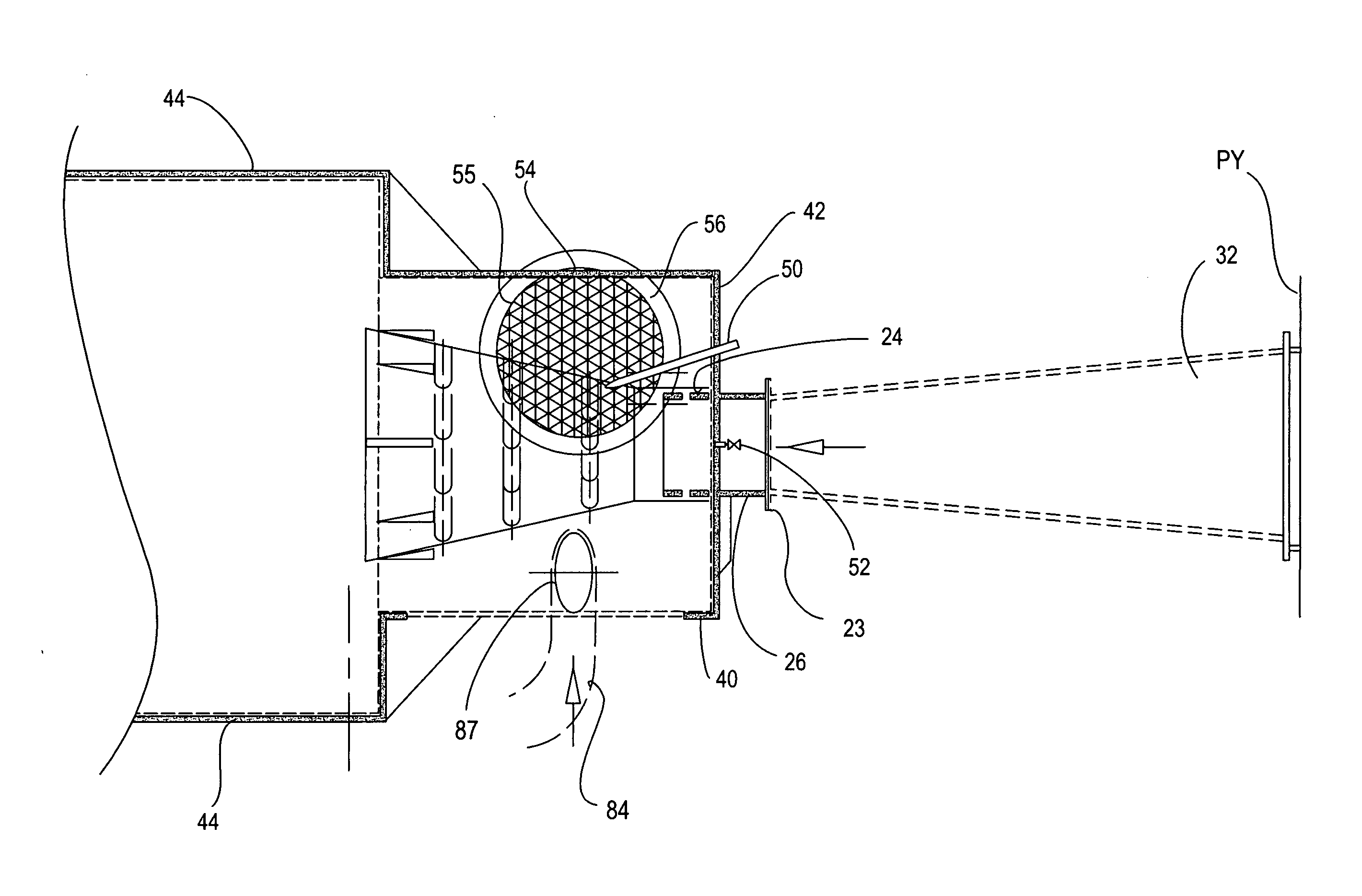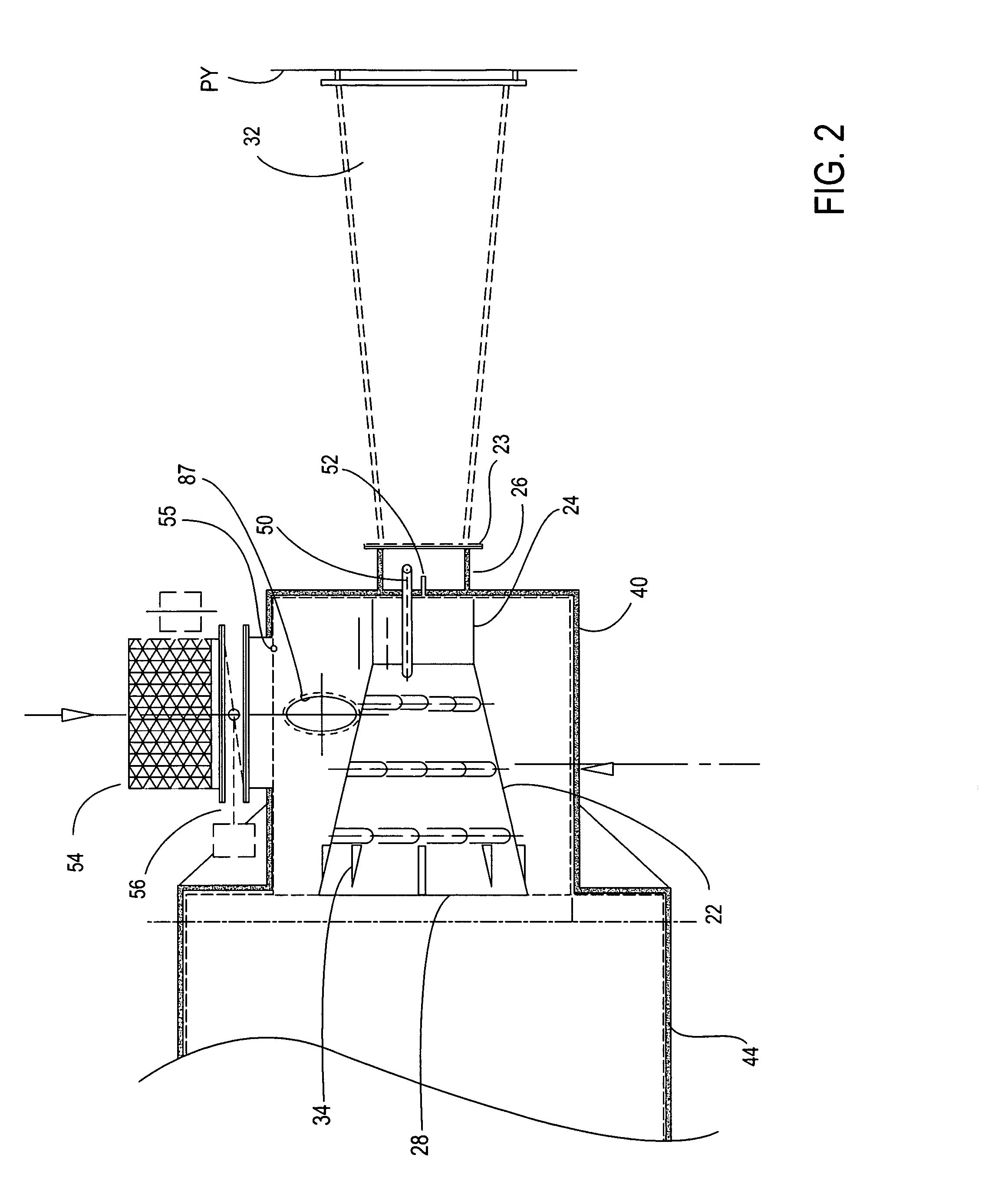Conical cyclonic oxidizing burner
a technology of cyclonic oxidation and burner, which is applied in the direction of combustion types, furnaces, lighting and heating apparatuses, etc., can solve the problems of unfavorable environmental protection, unfavorable use, and unfavorable use, and achieves cost-effectiveness, turbulence, and increase the retention time of flames. , the effect of increasing the temperature of the system
- Summary
- Abstract
- Description
- Claims
- Application Information
AI Technical Summary
Benefits of technology
Problems solved by technology
Method used
Image
Examples
Embodiment Construction
[0023] Referring to FIGS. 1, 1A and 2, the thermal oxidizer of the present invention may be configured with a burner basket 22 mounted in an oxidation chamber 40 and attached to a nozzle 26. The oxidation chamber may incorporate a gross air control 54, a fine air control 80, and a premix air valve 50 where necessary (FIG. 4).
[0024] The burner basket 22 is configured with a frustoconical frame whose larger diameter base end 28 is opposed by a smaller diameter entrance end with an extended projection 24. In a preferred embodiment, the basket is formed from stainless steel. The frame incorporates within its surface multiple rings of openings concentrically aligned along the perimeter of the frame surface. Burner tabs 30 extend inwardly from each of the openings. The tabs are typically formed in rings parallel to the ends of the basket frame but may be adjusted to form rings that are angled to the basket ends or arranged in a spiral path down the length of the frame. The base end 28 ma...
PUM
 Login to View More
Login to View More Abstract
Description
Claims
Application Information
 Login to View More
Login to View More - R&D
- Intellectual Property
- Life Sciences
- Materials
- Tech Scout
- Unparalleled Data Quality
- Higher Quality Content
- 60% Fewer Hallucinations
Browse by: Latest US Patents, China's latest patents, Technical Efficacy Thesaurus, Application Domain, Technology Topic, Popular Technical Reports.
© 2025 PatSnap. All rights reserved.Legal|Privacy policy|Modern Slavery Act Transparency Statement|Sitemap|About US| Contact US: help@patsnap.com



